Products Liability
“Worst Toys List” Warns of “Toy Weapons,” Choking Hazards and Hazards of Buying Toys Online
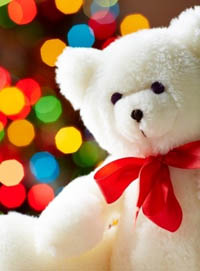 The World Against Toys Causing Harm, Inc. has released its 41st annual “10 Worst Toys” list. This year, the Boston-based non-profit nominated toys which posed a choking hazard, had improper labeling and several “toy weapons,” including toy guns, sling shots and boomerangs.
The World Against Toys Causing Harm, Inc. has released its 41st annual “10 Worst Toys” list. This year, the Boston-based non-profit nominated toys which posed a choking hazard, had improper labeling and several “toy weapons,” including toy guns, sling shots and boomerangs.
The report said, “These toys, that resemble real weaponry, have no place in the hands of children. Evidence of the potential for tragedy is the recent death of a thirteen-year-old boy in Santa Rose, CA, who was fatally shot by a police officer who mistook his toy gun for a real weapon.”
In one case, the World Against Toys Causing Harm (or W.A.T.C.H.) caught a vendor selling slingslots on Amazon.com. Massachusetts law prohibits sale of slingshots and New Jersey, Rhode Island and Washington have similar laws.
W.A.T.C.H. urged consumers to be vigilant even if they are purchasing toys from a well-known brand name. It stated there have been 29 toy recalls in the past 12 months, which included over one million units of unsafe and defective toys in the United States and Canada. Of these, 20 recalls were initiated for toys which posed choking and ingestion risks.
This year’s list includes:
1) Army Force Automatic Rifle
Hazard: Realistic toy weaponry and inconsistent age recommendations on labeling and Amazon.com.
2) Big Rock & Roll Ball Pit
Hazard: Potential for impact injuries because children as young as 3-years-old are encouraged to climb inside a rolling, inflatable ball. W.A.T.C.H. also criticizes the package, which shows children playing with no parental supervision.
3) Max Steel Interactive Steel with Turbo Sword
Hazard: Potential for impact and facial injuries.
4) Disney Princess Backpack Fishing Kit
Hazard: Potential for chemical ingestion injuries. The cardboard insert warns the play item may contain lead which may be harmful if eaten or chewed.
5) Black Widow Folding Slingshot
Hazard: Potential for serious bodily injuries. Illegal to sell in Massachusetts and three other states. On Amazon.com, the product carried a “for 6 months and up” age recommendation.
6) Little Drummer
Hazard: Potential for ingestion and choking hazards. The drum is sold for babies as young as 12-months-old and the drumstick could block a child’s airway.
7) Boomerang “Throw & Catch”
Hazard: Boomerangs should not be sold to children of any age. Online toy recommendations and those on the package were also inconsistent. Online, the boomerang was recommended for children 16 months and up versus on the package, which stated it was not for children under 3 years.
8) Disney Baby Snow White
Hazard: Potential for choking hazards. The toy is marketed for children 2 years old and up, but has small detachable pieces, such as hair accessories.
9) Nerf N-Strike Jolt Blaster
Hazard: This toy is marketed for children age 8 and older. It has a dart which can be shot and potentially cause eye injuries. On the Hasbro website, the product description reads “Hide it in your pocket to maneuver in close to your enemy, then pull down the cocking handle to ready your shot. Pull the trigger and reload fast to win the day!”
10) The Spooner-Freestyle
Hazard: Potential for head and other impact injuries. This toy resembles a skateboard without wheels and is marketed for children age 3 and older. It does not mention use of safety gear and none is worn by children on the packaging.
Related:
10 Worst Toys of 2013, W.A.T.C.H.
Trouble in Toyland, U.S. PIRG.
Read More
Tips for Buying Safe Toys This Holiday
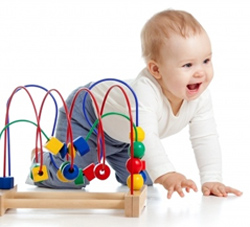 Many of us worry about buying unsafe toys during the holiday season. This concern has merit. In 2011 alone, more than 262,000 toy-related injuries were reported and another 13 children were killed while playing with dangerous toys, according to the Consumer Product Safety Commission (CPSC). This year, the CPSC reports toy recalls are down, but toy-related injuries have risen.
Many of us worry about buying unsafe toys during the holiday season. This concern has merit. In 2011 alone, more than 262,000 toy-related injuries were reported and another 13 children were killed while playing with dangerous toys, according to the Consumer Product Safety Commission (CPSC). This year, the CPSC reports toy recalls are down, but toy-related injuries have risen.
What to remember when you shop:
Choose Age-Appropriate Toys. Toys should have labels explaining age recommendations and other important warnings, such as “Flame retardant/Flame resistant.” The CPSC recommends avoiding toys with small pieces for children under age 3. They pose a choking hazard. For older children, avoid playsets with small magnets and balloons.
Buying Toys Online. Read instructions for use carefully. If you are buying from Amazon or eBay, remember those websites are only shopping forums. Take note of which company is selling the product.
Sharp Pieces.Toys designed for children under 8 years of age should not have sharp glass or metal edges.
Shattered Pieces. Set aside any toy that looks like it could easily shatter into small pieces and cause choking, cuts or other serious personal injuries.
Magnets.Toys with small magnets are dangerous to children. When children swallow one or more, the magnets can pull together and cause internal injuries, resulting in vomiting, abdominal pain and infection. In the past few years, children have suffered serious injuries and even death. In response, the CPSC has started a Magnets Information Center.
Loud Noises.Toy guns, tablets and talking dolls can damage a child’s hearing over time if used too closely.
Cords and Strings. Toys with long cords and strings can cause strangulation. Carefully consider this before you buy crib gyms, baby mobiles and swings. If a child can reach a baby mobile, it should be removed.
Batteries. Make sure an adult, not a child oversees battery charging for any toys or electronics. Avoid toys with small button-cell batteries, which can be easily swallowed and cause burning, esophagus pain and vomiting among other symptoms. Also be aware of other appliances, such as remote controls, which use these small batteries.
Sports Equipment. When you buy a sports-related toy, make sure you also buy the safety equipment, such as bike helmets for bikes. Children are required to wear bike helmets in Massachusetts until age 16 and if an accident were to occur, they are an important tool for preventing a lifelong head injury.
Related:
Holiday Toy Safety, Consumer Product Safety Commission.
Tiny Batteries Causing Big Health Problems for Kids, ABC News.
Read More
Household Safety: Check Old Appliances Before Winter
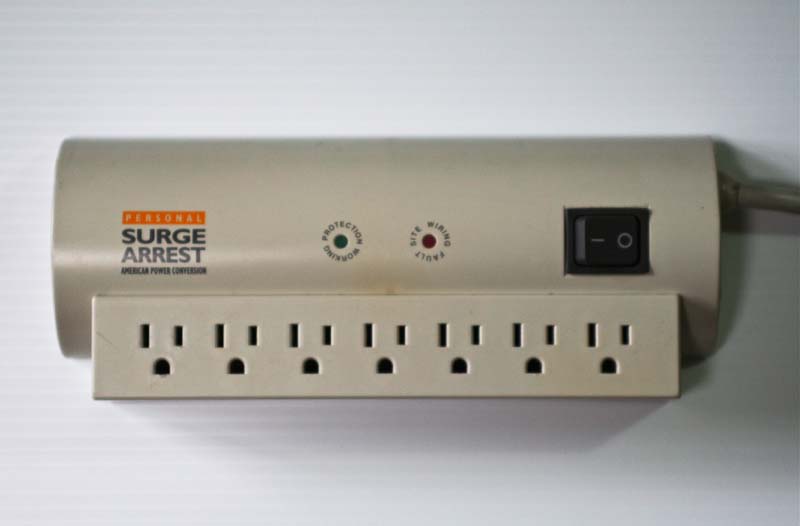 Now, as we head into winter, is a good time to test your home’s smoke alarms, check your appliances and inspect your electrical outlets and cords.
Now, as we head into winter, is a good time to test your home’s smoke alarms, check your appliances and inspect your electrical outlets and cords.
First, a good resource is the Consumer Product Safety Commission (CPSC) website, where you can search for recall news about products you may own. Recently, there have been several recalls involving products posing serious fire hazards.
One example is Schneider Electric IT Corp. recalled 15 million APC Surge Arrest surge protectors in early October. This followed 700 reports of property damage, including $916,000 in fire damage to a home and $750,000 to a medical facility. Another 13 reports were injuries, including smoke inhalation and contact burns. Another example is Gree Electric Dehumidifiers, which recalled 2.2 million dehumidifiers in the U.S. last month, after its products caused 46 fires and $2.15 million in property damage.
You can review the CPSC website to make sure you have no recalled products in your home. You can also take a look around your home for faulty cords or products.
Preventing Home Fires in the Winter
During a typical year, there are over 26,000 home electrical fires in this country, according to the U.S. Fire Administration. December and January see the most electrical fires. We share a few tips for preventing these fires:
1) Check your smoke alarms before the season.
2) Regularly check your electrical appliances and wiring. Replace any old or damaged cords; do not try to repair them.
3) Replace any appliance you feel may not work properly. If you do not want to replace it, call a repair service or visit the store where you purchased the product. Check electric space heaters every year as a rule.
4) Buy appliances which have the label of a recognized testing laboratory, such as UL.
5) Avoid using extension cords.
6) Use only surge protectors or power strips that have internal overload protection and have been tested by a national laboratory.
7) Keep clothes and flammables at least three feet away from all portable electric space heaters.
8) Use light bulbs that match recommended wattages for lamps.
9) Bring in an electrician if you are experiencing flickering lights or other problems.
Related:
Electrical Home Fire Safety, U.S. Fire Administration
Schneider Electric Recalls APC Surge Protectors Due to Fire Hazard, Consumer Product Safety Commission.
Read More
New Safety Standard Approved for Baby Cradles and Bassinets
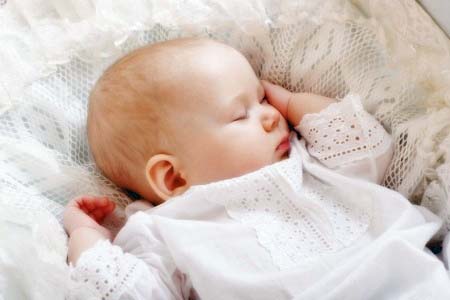 Bassinets and cradles will soon have to meet a federal standard for safety.
Bassinets and cradles will soon have to meet a federal standard for safety.
On Sept. 30, the Consumer Product Safety Commission (CPSC) announced it has approved a new mandatory standard in a 4-1 vote. Bassinets and cradles have long had no mandate, despite hundreds of reports of personal injuries and deaths over the years. Meanwhile, full-sized cribs and other baby furniture have faced regulation.
From November 2007 through March 2013, the CPSC reported 132 deaths involving bassinets and cradles. The agency received a total of 426 incident reports.
Bassinets and cradles are intended for infants up to 4 or 5 months old, but some organizations, such as Consumer Reports, have recommended parents move directly to cribs because of safety concerns and their short life.
Children have been injured when bassinets and cradles collapse in the middle or tip over. Infants can also suffocate by rolling into pillows, blankets or a mattress in the cradle of the bassinet. One danger has been swinging or hammock-style cradles which are suspended from a frame. In 2009, Amby Baby USA recalled 24,000 Amby Baby Motion Beds after two infants died in them.
For years, manufacturers have been encouraged to meet the voluntary standards set by the ASTM International (formerly known as the American Society for Testing and Materials). These will be incorporated into the CPSC’s new standard, but the CPSC has recommended five modifications. They include changing the pass/fail standard for mattress flatness, creating an exemption to the mattress flatness requirement for bassinets that are less than 15 inches across and making the dummy used to test stability smaller.
Read more about the new safety regulations for bassinets and cradles.
Buying a Safe Bassinet or Cradle
If you are a parent buying a new bassinet or cradle, our Boston product liability lawyers share these tips:
New standard is not effective yet. The final rule will be published in the Federal Register, then take effect six months later. But manufacturers have an additional 12 months after that before they must comply.
Do not use past 5 months old. Follow the manufacturer’s guidelines on the appropriate weight and size of babies. The CPSC advises use stop at 5 months of age or when babies can push up on their hands and knees.
Can it stop swinging? Make sure swinging cradles can made still once a baby is asleep.
Make sure it is stable. Check screws and bolts periodically to see if they are fastened. If the product’s legs fold for storage, make sure they have solid locks so your child will not fall.
No pillows. Do not use pillows. Make sure the mattress and padding fit snugly. Avoid purchasing a baby product with long strings, bows or other accessories which a baby can grab onto.
Read More
Two Million Dehumidifiers Recalled for Posing Fire Risk
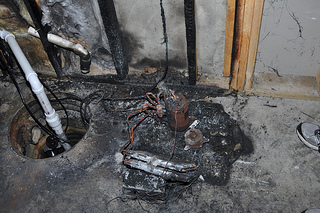 If you own a dehumidifier, there may be a refund heading your way.
If you own a dehumidifier, there may be a refund heading your way.
Last week, 2.2 million dehumidifiers were recalled in the U.S., along with 52,500 units in Canada. The dehumidifiers pose a fire hazard and can overheat, smoke and catch on fire, according to the Consumer Product Safety Commission (CPSC). Consumers are advised to stop using them immediately and contact the manufacturer Gree Electric for a refund.
Gree Electric issued the recall for multiple brand names after receiving 165 incident reports, including 46 fires and $2.15 million in property damage. No injuries have been reported.
The dehumidifiers were sold under these brand names: Danby, De’Longhi, Fedders, Fellini, Frigidaire, Gree, Kenmore, Norpole, Premiere, Seabreeze, SoleusAir and SuperClima. The units sold for $110-$400 in various sizes and colors, from 2005 through last month.
The defective dehumidifiers were sold at Home Depot, Kmart, Lowe’s, Menards, Mills Fleet Farm, Sam’s Club, Sears and other U.S. and Canadian stores. They were also available through Amazon.com.
See a full list of the model numbers and how to obtain a refund.
One of the last major dehumidifier recalls came in 2011. LG Electronics recalled 98,000 Goldstar and Comfort-Aire dehumidifiers after they were linked to fires causing over one million in property damage. A home in Hudson, Mass. sustained $183,000 in fire damage. Homes were also damaged in Pennsylvania, Minnesota, Indiana, Ohio and New Jersey.
The Goldstar and Comfort-Aire dehumidifiers were first recalled in December 2009 following 11 incidents, including four fires. The company re-issued the recall in 2010 and 2011after receiving 16 additional reports of smoke and fire and nine significant fires. No injuries have been reported.
Check Your Home Appliances for Winter
The recall provides a good reminder to check your household appliances for fire hazards before the winter.
1) Make sure your appliance cords are covered and not frayed or ripped anywhere.
2) Check your smoke alarms and carbon monoxide detectors. You should have a smoke alarm in every bedroom and a carbon monoxide detector on every floor.
3) Check the CPSC website. Recently, the CPSC has announced recalls involving floor lamps sold at Target and ceiling lamps. Both products were recalled for posing a fire hazard.
Related:
Home Fires Prompt Dehumidifier Recall Reannouncement from LG Electronics, Consumer Product Safety Commission.
Target Recalls Threshold Floor Lamps Due to Fire and Shock Hazard, Consumer Product Safety Commission.
Ceiling-Mounted Light Fixtures Recalled by Dolan Designs Due to Fire and Shock Hazards, Consumer Product Safety Commission.
(photo credit: Consumer Product Safety Commission flickr)
Read More
Toys Recalled in Summer 2013 Pose Choking Hazard, Injury Risks
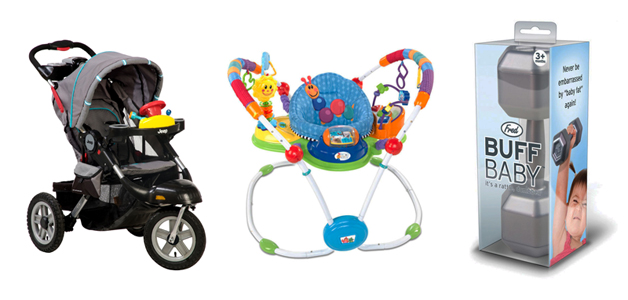
If you have young children, you have probably logged a few hours watching them play this summer. This joy of parenthood comes with an important responsibility: to make sure their toys are safe.
In the United States, the Consumer Product Safety Commission (CPSC) regulates the toy industry. Toys for children 12 and under are required to pass third-party testing and certification, but each year, defective toys still make it to store shelves and cause serious injuries and deaths. In 2011, more than 260,000 children were treated for toy-related injuries in the hospital emergency room and 13 were killed, according to the CPSC.
If you are a parent, be vigilant. Start by inspecting your children’s toys every time they play. Check the age labeling. Make sure they are no small parts that pose a choking hazard. When in doubt, set the toy aside and have your children play with something else.
Another way to protect your children is to stay informed. You may not see every toy recall on the TV news, but can visit the CPSC website and social media sites for news on toy recalls. A few recalls from this summer include:
Baby Einstein Musical Motion Activity Jumpers
Kids II voluntarily recalled about 400,000 Baby Einstein Musical Motion Activity Jumpers earlier this month. Another 8,500 activity seats have been recalled in Canada. The toy is linked to 61 injuries.
The hazard is when infants reach out and play with one of the attached toys (the toy with the smiley face), it rebounds back.
Kids II received 100 incident reports, including the 61 injuries. Injuries included bruises, facial lacerations and a 7-month-old boy who sustained a lineal skull fracture. In one case, an adult suffered a chipped tooth.
Kids II, which is based in Atlanta, Georgia, is the product importer. The toy was manufactured in China prior to November 2011. Kids II will replace the defective part for consumers for free. Many models were sold at Target, Toys R Us and Amazon.com between May 2010 and May 2013. Recall notice.
Kolcraft Jeep Liberty Strollers Kolcraft recalled 96,000 strollers in the United States after 39 reports of defective wheels. The inner tube can rupture, causing the wheel rim to fracture and fly off as a projectile. The reports included 18 injuries, most of which occurred when an adult attempted to fill a tire with air. Children and adults reported suffering lacerations, abrasions and contusions.
The stroller was manufactured in China. Kolcraft Enterprises, Inc. of Chicago, Illinois was the product importer. It was sold at Burlington Coat Factory, Sears and Toys R Us and other retailers from June 2010 to June 2013 for between $150 and $180.
Consumers are advised to stop using the defective stroller and contact Kolcraft for free replacement wheels. Recall notice.
“Buff Baby” Baby Rattles
In June, Fred & Friends announced the voluntary recall of 47,500 “Buff Baby” baby rattles in the United States. The rattles, which are designed to look like a dumbbell weight, are designed for children 3 months and older. The rattles were recalled because they pose a choking hazard to young users. The cap can separate and expose the plastic pellets inside to infants. Fred & Friends received two reports of this happening, but no injuries.
The rattles were sold in specialty toy and baby stores nationwide and in Canada, as well as online through Amazon.com and other websites from October 2011 through June 2013.
Consumers are advised to stop using the rattles and contact Fred & Friends for a full refund. Fred & Friends, which is located in Cumberland, Rhode Island, is the distributor. The toy was manufactured in China. Recall notice.
Thermobaby Bath Seats Recalled Due to Drowning Hazard
The Aquababy Bath Ring was recalled after the CPSC determined it does not meet federal safety standards. The product is supposed to hold children secure in the bath, but the design poses a risk for tipping over.
SCS Direct Inc. of Milford, Conn. voluntarily recalled 7,500 of the bath seats. There were no injuries involved in this recall. The seats were designed for children five months to ten months old. It was sold through Amazon.com. Consumers are advised to stop using the product and contact SCS Direct for a $35 refund. Recall notice.
Read More
Amusement Park Accidents are Investigated Differently in Massachusetts and Texas
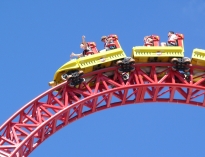
Product Liability: Retailer Fined $3.9 Million for Illegal Sale of Children’s Clothing with Drawstrings
Last month, a discount retailer agreed to pay one of the largest fines ever issued by the Consumer Product Safety Commission (CPSC). The civil penalty settles allegations over illegal sales of children’s clothing with drawstrings.
The CPSC announced that Ross Stores, based in Pleasanton, California, agreed to pay a $3.9 million penalty and implement compliance programs. From January 2009 to February 2012, the CPSC alleges that Ross Stores knowingly failed to report that it sold or held for sale about 23,000 children’s upper outerwear garments with drawstrings at the neck or waist.
Under federal law, manufacturers, distributors, and retailers must report to the CPSC within 24 hours of learning about a defective product which may create a substantial product hazard. They must also report those which create an unreasonable risk of serious injury or death or fail to comply with CPSC regulations.
In July 2011, the CPSC issued a final rule and determined that children’s upper outerwear garments in certain sizes present substantial product hazards. The ruling should have taken the majority of children’s clothing with neck, hood and waist strings out of stores.
Ross Stores has now been fined twice over drawstring clothing for children. In 2009, it paid a $500,000 fine for failing to report it sold garments between 2006 and 2008.
The CPSC has received over two dozen reports of children suffering injury and wrongful death when clothing drawstrings get caught on playground equipment or vehicle doors. Since passing its 2011 rule, it has issued 8 recalls. In 2011, the CPSC also fined Macy’s $750,000 for selling children’s upper outerwear with drawstrings.
Related:
Ross Stores Fined in Sales of Defective Clothing, New York Times
Take Extra Precautions with Propane Gas Grills This Holiday
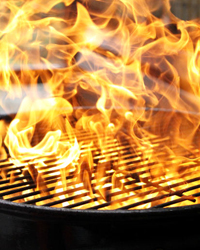
For many of us, Fourth of July celebrations start with a barbecue grill. Many are powered by a propane gas tank and require special care in handling. Propane is an invisible, but highly flammable gas which can trigger an explosion if it leaks and comes into contact with fire.
When grills are not properly used or maintained or are left unattended, accidents can occur. There are several safety concerns associated with grills, including propane leaks, cooking burns and fires. In the last year, there have also been a few product recalls involving grills.
Propane Gas Leaks and Explosions
Protect your propane gas tank from leaks. Take care when transporting it to your refilling station. Place it in a secure box and return it immediately home after filling it. Have it inspected annually by a qualified professional.
Store the propane gas tank outside your home. Also keep it away from your garage or any deck attached to your home. These areas may seem safe to use because they are not living areas, but according to the U.S. Fire Administration, more than half of all residential grilling fires in the U.S. begin on porches, terraces, exterior balconies and similar areas.
Grilling Burns and Structure Fires
When grilling, the safest solution is to stay outside your home or apartment building, as far away as you can.
This protects your home as well as your guests and young children who are too often victims of grilling burns. According to the National Fire Protection Association, children under age 5 accounted for about one quarter of all thermal burn injuries in 2007. Many of these burns occur when children are curious and touch or bump up against the grill.
If you live in an apartment building or multi-unit dwelling, you may also want to check with your property manager and city and town offices for additional information. Massachusetts state law does permit use of propane grills on first floor porches only, but some cities have gone a step further. For instance, the city of Boston does not permit either propane or charcoal grills above ground floor porches. Grilling on rooftops is not permitted either.
Before heading out to the grill, review the manufacturer’s instructions first. If you no longer have the instructions, check if they are available on the manufacturer’s website.
Use long-handled grilling tools and avoid wearing loose clothing. Work neat and remove grease and fat build-up from the grills.
Finally and most important, never leave the grill unattended. If you need to step away for a minute, finish up your cooking and turn the grill off.
Grill Recalls
Check the Consumer Product Safety Commission and your manufacturer’s website to see if there have been any recalls involving your grill. When a grill is recalled, you may be asked to return it to the manufacturer or retailer for a refund or be given instructions to replace a part.
In April 2012, more than 87,000 gas grills sold in the U.S. were recalled by One World Technologies, and another 1,400 in Canada. The company offered consumers a replacement regulator after receiving 569 reports its grills were leaking propane gas. The defective grills were sold at Home Depot stores nationwide and Directory Tools Factory Outlet stores from March 2011 through February 2012.
No injuries were reported at the time of the recall.
Another recall came in November 2012, when 37,000 Master Forge Gas Grills sold at Lowe’s Stores were recalled due to fire and burn hazards. In that case, consumers were asked to contact the manufacturer, Guangdong Vanward Electric Co., Ltd., of China, for revised instructions and a warning label that showed how to properly install the hose and regulator.
At the time of the recall, the manufacturer reported two reports of hoses melting and rupturing, but no injuries. The defective product was sold at Lowe’s stores nationwide from November 2011 through May 2012.
Dangerous Magnet Toys Recalled by Major Retailers
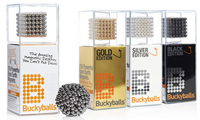
The Consumer Product Safety Commission (CPSC) has moved a step closer to taking two dangerous magnet toys out of the hands of children.
On April 12, six retailers voluntarily recalled Buckyballs and Buckycubes. The stores included Barnes & Noble, Brookstone, some Hallmark stores, Marbles the Brain Store and Think Geek.
Maxfield & Oberton Holdings of New York City, the importer and distributor, refused to issue a recall last year, prompting the CPSC to file a lawsuit against the company in July to stop sales. The rare legal action – one of just four taken by the CPSC in the past 11 years – resulted in the company discontinuing its products in October. It stopped doing business in December.
The product was manufactured by Ningo Prosperous Imp. Exp. Co. Ltd. of Ningbo City in China.
Buckyballs and Buckycubes vary in size and color, but they are essentially a ball or cube of small powerful magnets. They were sold in containers of 10 to 216 magnets that can become loose. The first of the two products was introduced in the U.S. in March 2009. Since then, over three million sets of magnets have been sold in U.S. retail stores and online.
Maxfield & Oberton initially marketed Buckyballs to children, calling it “an amazing toy.” It later rebranded the magnet toys as an adult desk toy and stress reliever.
But while the magnets were being marketed to adults, the CPSC was still receiving reports that children were swallowing them. It has received 54 reports of injuries, all but one requiring medical treatment.
CPSC Complaint
The CPSC’s July 25, 2012 complaint alleged that the magnet products had defective labeling and warnings, defective design, and posed a substantial product hazard.
The CPSC began working with the company on labeling three years ago, when the magnets were labeled for use by children “Ages 13+.” The agency said the magnets should have been marketed for age 14 and up.
Maxfield & Oberton changed the labeling and agreed to a voluntary recall of 175,000 magnet toys, but the CPSC said the injuries continued. In its complaint, it states, “…labeling and warning labels cannot guard against the foreseeable misuse of the product and prevent the substantial risk of injury to children.”
Company officials did not agree with the CPSC’s action. In October, they posted a statement on their website that read in part: “We’re sad to say that Balls & Cubes have a one-way ticket to the Land-of-Awesome-Stuff-You-Should-Have-Bought-When-You-Had-the-Chance.”
Dangerous Toy
Over the past few years, the CPSC set up a Magnets Information Center on its website to educate the public about the danger of swallowing magnets.
The risk is that if a child ingests more than one of the powerful magnets, they can become attracted to each other while in the intestines, pinching tissue and damaging the intestinal walls. This can result in a wide range of symptoms, including vomiting, abdominal pain, infection and death. Surgery is often required and becomes more complicated because the magnets can stick to the metal surgical tools.
And in some cases children ingested more than one or two. CBS News reported the case of a 3-year-old Oregon girl who swallowed 37 Buckyballs. The CPSC complaint details cases of other young children who have swallowed numerous magnets.
Related:
CPSC administrative complaint
Recall information for consumers

